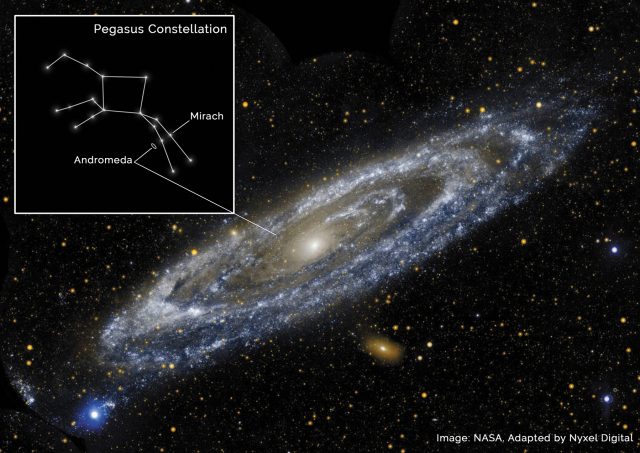With the weather warming up, now is a great time to get out under a dark sky and explore your Universe. Through winter the orientation of Earth allows us to look into the centre of our own galaxy, but in summer we look away from the centre, allowing us to search for other galaxies or ‘star cities’!
The Milky Way is part of a group of galaxies that are all linked together by the pull of gravity, called the Local Group. There are about 54 galaxies in our Local Group. These are mostly dwarf galaxies clustered around the 3 largest of Milky Way, Andromeda and Triangulum.
Andromeda is 2.5 million light years away and November is the best time to see it. They say it is the most distant object visible to the human eye and it’s always thought to have been larger than our Milky Way Galaxy. Recent research by the University of Western Australia node of the International Centre for Radio Astronomy Research estimates that Andromeda is the same size as the Milky Way or perhaps even slightly smaller. Brush up on the new research at www.icrar.org/cosmic-collision.
When to look:
From 9 pm, between 19-29 November 2019. The Moon will be waning and won’t be in the early evening night sky to wash out the view of this very faint object.
Which direction to look: North
You will need a very dark sky with no moonlight and a clear view to the northern horizon to see Andromeda. Using a star chart or a free online tool like SkySafari AR or Stellarium will help you find Andromeda.
First, using a star chart or app, search for and locate the star called Mirach low on the northern horizon. Use this star and the pattern of fainter stars that are below and to the left of Mirach to try and locate Andromeda with the naked-eye.
Remember:
To see this deep space object with the unaided eye, practice using averted vision to tease out the faint light. If you focus on a nearby star, it should make it easier to spot Andromeda out of the corner of your eye.
For more stargazing tips, visit www.astrotourismwa.com.au.








